Allotetraploid cotton (
Gossypium hirsutum
and
Gossypium barbadense
) are cultivated worldwide for its white fiber. Since centuries, conventional breeding approaches increase cotton yield at the cost of extensive erosion of natural genetic variability. Sea Island cotton (
G
.
barbadense
) is known for its superior fiber quality, but show poor adaptability as compared to Upland cotton. Hence, there is a dire need to improve the current germplasm resources of Sea Island cotton to develop diverse breeding lines with improved adaptability and excellent agronomic and economic traits. Ethyl methanesulfonate (EMS) is an excellent mutagenic agent that induces genome-wide point mutations to activate the mutagenic potential of plants. In current study, we determined the optimal EMS experimental procedure suitable for construction of cotton mutant library. At M
6
generation, mutant library comprised of lines with distinguished phenotypes of the plant architecture, leaf, flower, boll and fiber. Genome wide analysis of SNP distribution and density in yellow leaf mutants reflected the better quality of mutant library. Our mutant collection will serve as the valuable resource for basic research on cotton functional genomics, as well as cotton breeding.
- Ethylmethanesulfonate
- mutant bank
- mutation breeding
- germplasm resources
- Allotetraploid cotton
- plant architecture
- virescent mutants
1. Content
Genotype ISR was selected for large-scale mutagenic treatment and mutant library construction using the dose and treatment time estimated in preliminary tests. Germination rate of ISR in different concentration of EMS treated for 2 h have been presented in Figure 2. Therefore, for field experiment 2% of EMS dose and 2 h of treatment time was selected as the optimized EMS treatment conditions for cotton.
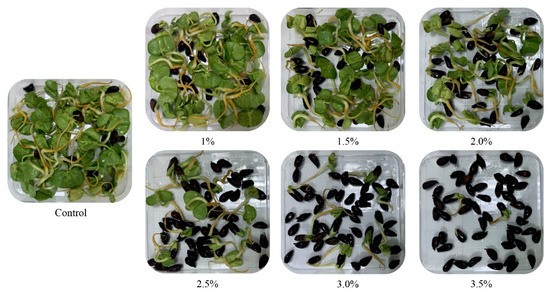
Figure 1. Germination rate of ISR seeds under different concentrations of EMS.
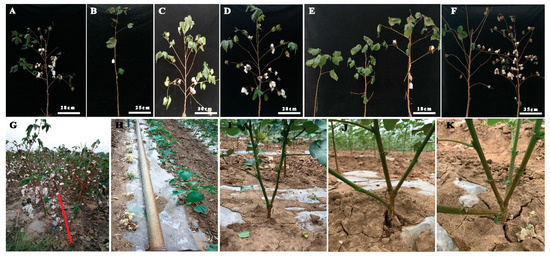
Figure 2. Phenotypic analysis of plant architecture in EMS-induced mutants. (A) Wild type plant architecture, (B) mutant phenotype without fruiting branch, (C) medium height with spreading branches, (D) high yielding mutant as compared to wild type, (E) comparison of fruit branch pattern including without fruiting branch, compact and short fruit branch, longer fruit branches, (F) Longer and spreading branches with different boll bearing capacity, (G) comparison of mutant lines high and low seed cotton yield, (H) comparison of yellow leaf plants with green leaf plants, (I) mutant plant with two main stems, (J) mutant plant with three main stems, (K) mutant plant with four main stems.
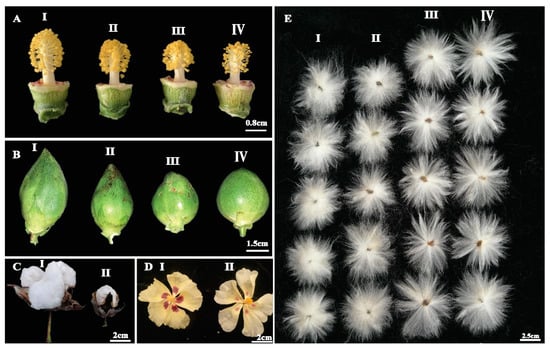
Figure 3. Phenotypic analysis of floral traits in EMS-induced mutants. (A) Comparison of wild type (II) and mutant lines (I, III, and IV) with varying length of flower style and anther numbers, (B) comparison of wild type (II) with mutant lines (I, III, and IV) with different boll size and shape ranging from oblong shape to nearly round boll, (C) evaluation of fully mature cotton boll with big boll size in wild type (I) and small boll size in mutant line (II), (D) comparison of wild type (I) and mutant line (II) for size and intensity of petal spot, (E) comparison of fiber length with I and II as mutants with short fiber length, III represent as fiber length of wild type, IV represent mutant with longer fiber length.
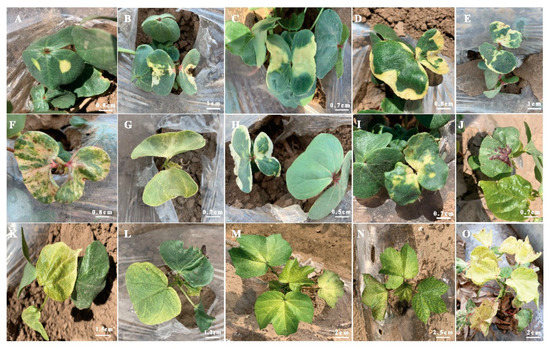
Figure 4. Yellow and yellow-green leaves of EMS-induced mutants (A–J) cotyledon leaves with different shades and positions of yellow color and anthocyanin pigments, (K–O) young true leaves with different shades of yellow and yellow-green color.
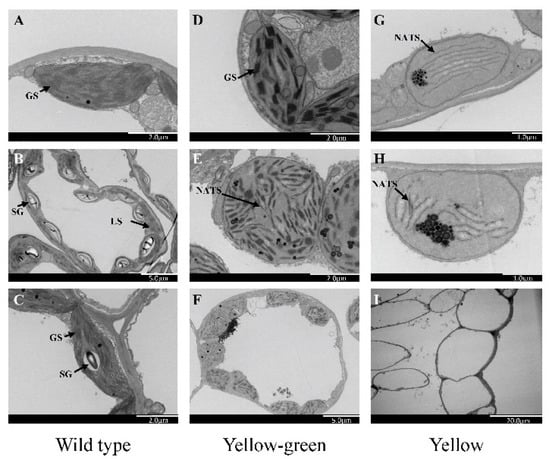
Figure 5. Transmission electron microscopy of the chloroplast ultrastructure, (A–C) Electron micrographs showing mesophyll cells and ultrastructure of chloroplast in wild type, (D–F) yellow-green leaf mutants, (G–I) yellow leaf mutants. GS, granal stack; SG, starch grain; NATS, non-appressed thylakoid stacking; LS, lamellar structure.
